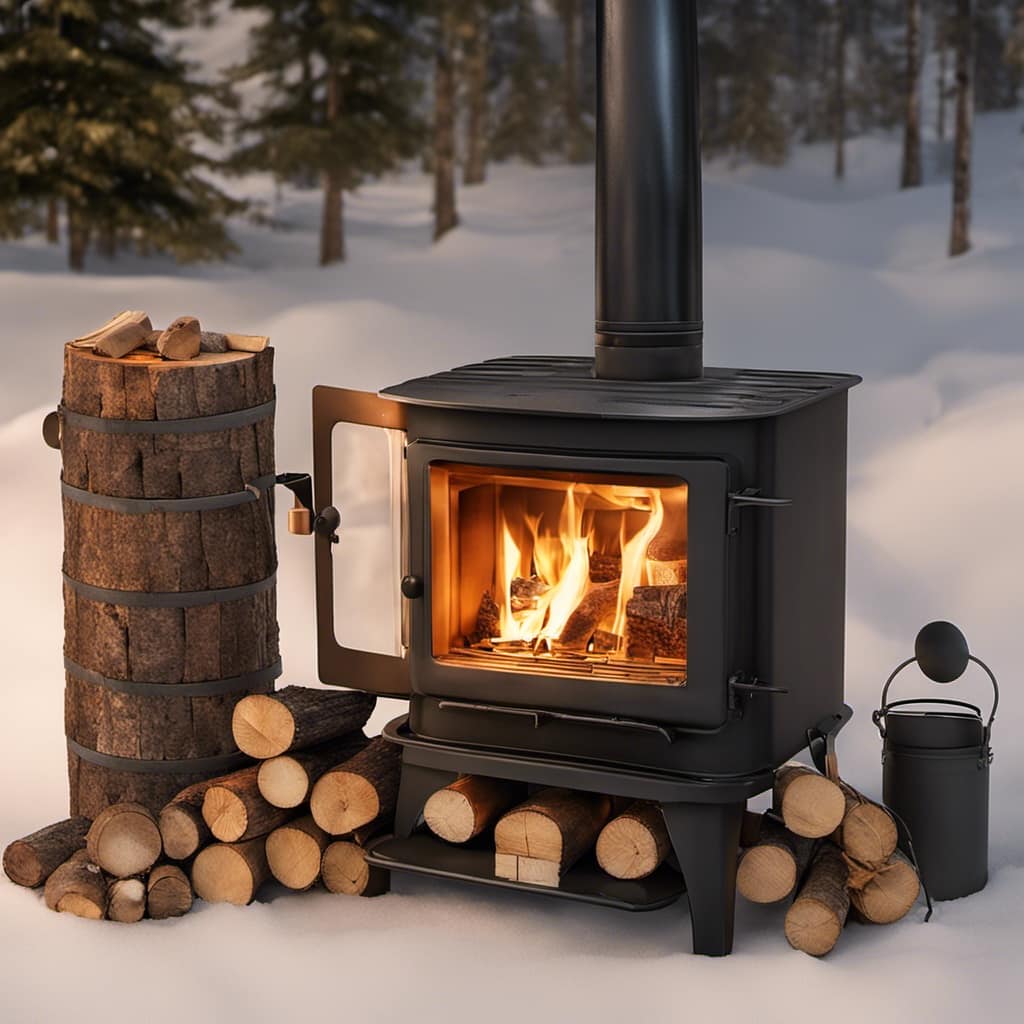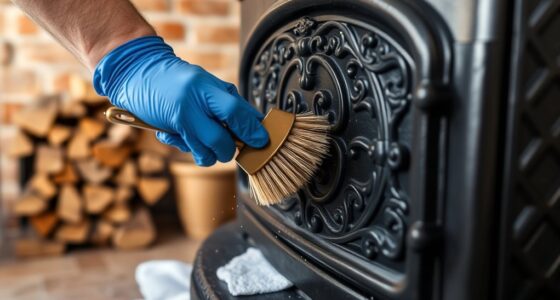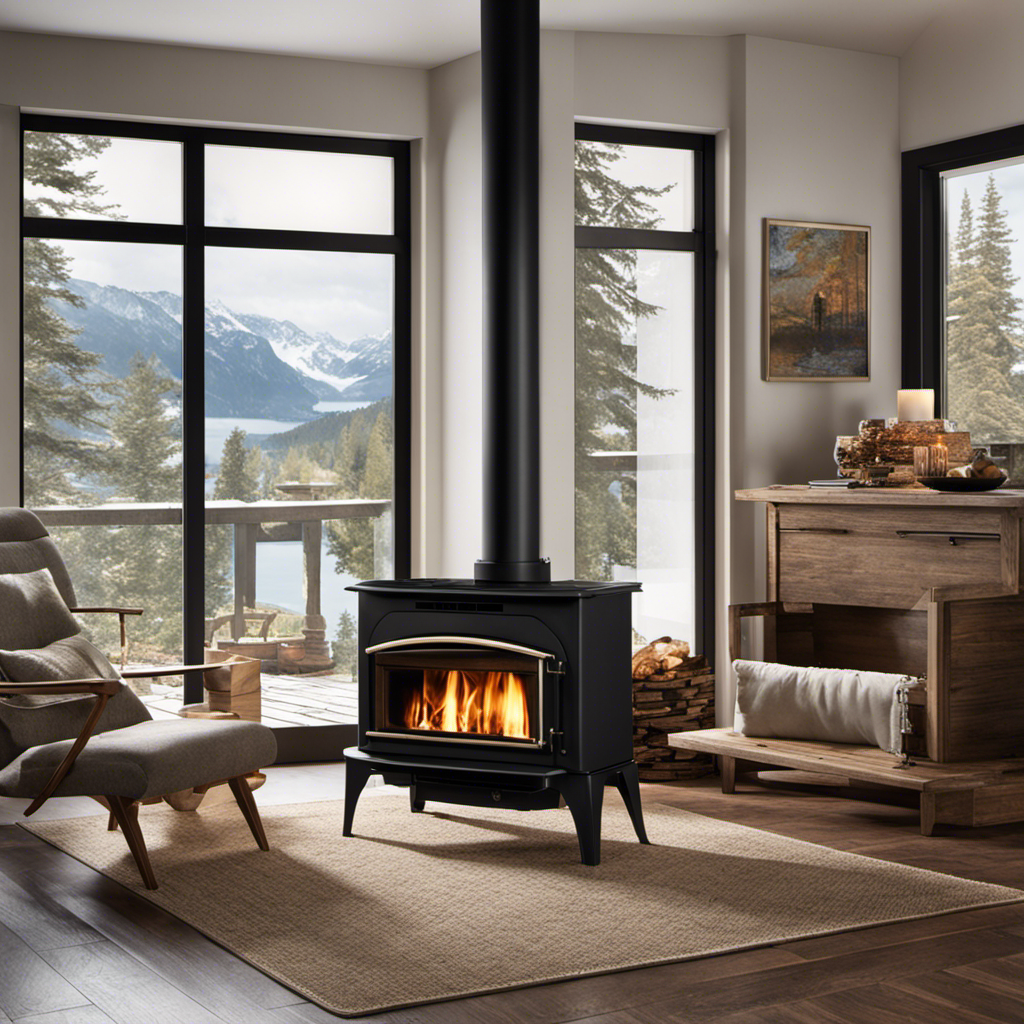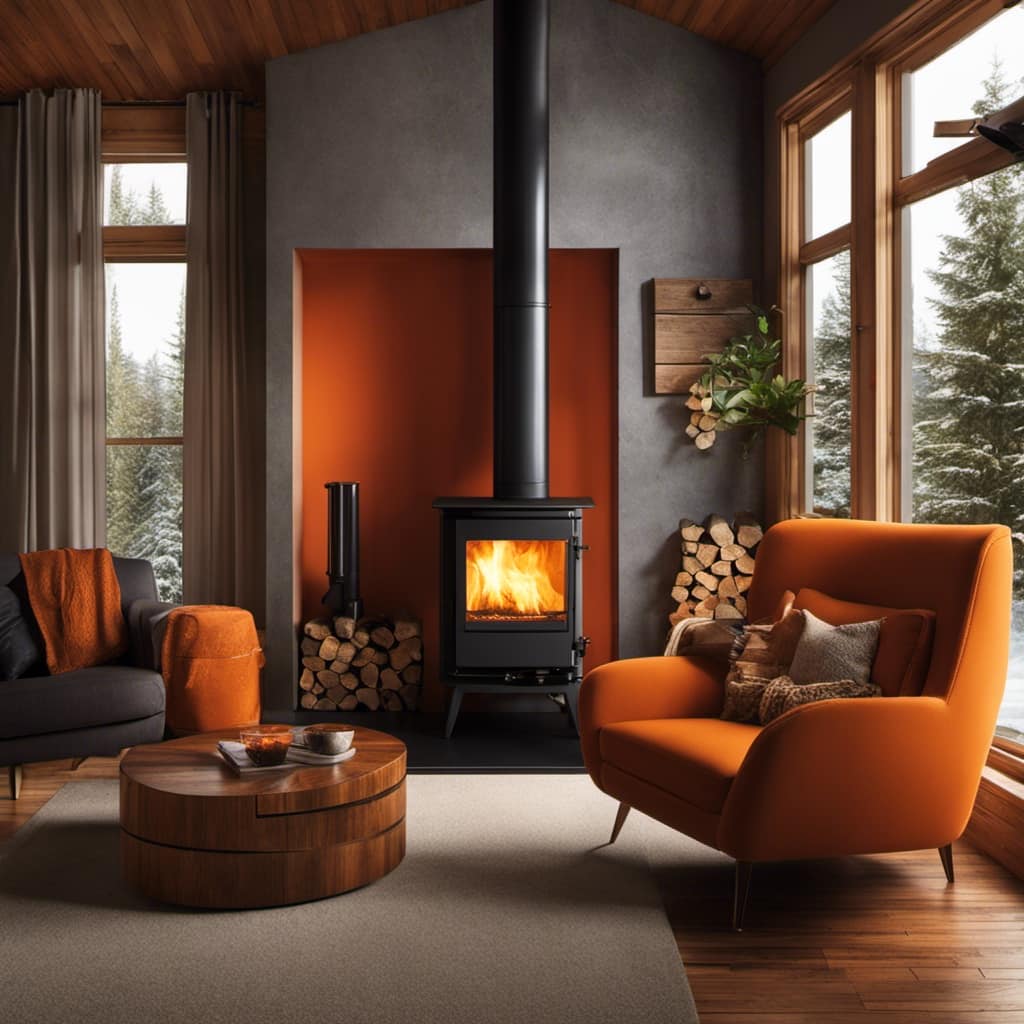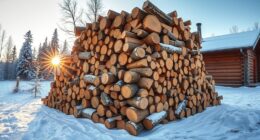
Based on my extensive experience with wood stoves, allow me to illustrate a scenario for you.
Imagine cozy evenings by the fire, the crackle of burning logs, and the comforting warmth filling your home.
Now, if you’re considering buying a used wood stove, you may wonder: how much is it worth?
In this article, I’ll share my knowledge on the factors that influence the value of a second-hand wood stove, from its condition and brand to its age and history.

So, let’s dive in and find out what your perfect wood stove is worth!
Key Takeaways
- The value of a used wood stove is influenced by factors such as its condition, age, maintenance history, and market demand for the brand/model.
- When evaluating the condition of a second-hand wood stove, it is important to consider signs of wear and tear, safety features, rust or corrosion, overall efficiency and heat distribution, and any necessary repairs or maintenance.
- The brand and model of a wood stove can significantly impact its price, with popular brands and models commanding higher prices due to their reputation for quality, reliability, efficiency, unique features, and market demand.
- Determining the age and history of a pre-owned wood stove can be done through the serial number, documentation, physical characteristics, previous owners/sellers’ insights, and knowledge of the wood stove industry and historical developments.
Factors Affecting the Value of a Used Wood Stove
In my opinion, the condition and brand of the used wood stove greatly impact its value. When evaluating the performance of a second-hand wood stove, it’s important to consider its efficiency and heat output. A well-maintained stove that efficiently burns wood and provides consistent heat will be more valuable than one that’s old and inefficient.
Additionally, the brand of the wood stove can also affect its value. Certain brands have a reputation for producing high-quality stoves that last longer and perform better. When comparing prices, it’s essential to take these factors into account. A used wood stove from a reputable brand in excellent condition will likely have a higher value than a lesser-known brand in poor condition.
Evaluating the condition of a second-hand wood stove is the next step in determining its worth.

Evaluating the Condition of a Second-Hand Wood Stove
I can quickly assess the condition of a second-hand wood stove. When evaluating efficiency, I look for signs of wear and tear on the stove’s components, such as the firebox, baffles, and flue pipes. These should be in good condition to ensure proper heat distribution and combustion.
I also check the stove’s safety features, including the door seal, handles, and draft controls. Any cracks or gaps in the door seal can lead to heat loss and decreased efficiency. The handles should be secure and easy to grip, while the draft controls should operate smoothly.
Additionally, I inspect the stove for any signs of rust or corrosion, as this can affect its performance and longevity.
Understanding the Brand and Model Influence on Price
The brand and model of a second-hand wood stove greatly impact its price. Popular brands and models that are in high demand will typically command a higher price compared to lesser-known or less sought-after options. Buyers are willing to pay a premium for stoves that have a reputation for quality, reliability, and efficiency. Certain brands and models may have unique features or design elements that make them more desirable to buyers. When it comes to wood stove pricing, market demand plays a crucial role in determining the value of a used stove. Therefore, when evaluating the price of a pre-owned wood stove, it’s important to consider the brand and model to understand its market value.

Now, let’s delve into the process of determining the age and history of a pre-owned wood stove.
Determining the Age and History of a Pre-Owned Wood Stove
To evaluate a pre-owned wood stove’s age and history, there are several key factors to consider.
Firstly, examining the stove’s serial number can often indicate its manufacturing date. By researching the brand and model, the serial number can be cross-referenced to determine its age.
Secondly, any accompanying documentation can provide valuable insights into the stove’s history. This may include receipts, maintenance records, or repair logs.

Additionally, the stove’s physical characteristics can also help estimate its age. Certain design features or materials used in its construction, such as cast iron components or unique styling, may indicate its age.
Speaking with previous owners or sellers can also provide valuable information about the stove’s history. They may be able to share details about how long it has been in use and any significant repairs or modifications.
Having a comprehensive understanding of the wood stove industry and its historical developments can also aid in accurately assessing the age and historical significance of a pre-owned stove.
Tips for Pricing and Negotiating the Sale of a Used Wood Stove
After researching comparable listings and considering factors such as condition and brand reputation, I can confidently determine a fair asking price for the used wood stove. When it comes to negotiating the sale of a used wood stove, it is important to have a clear understanding of pricing guidelines and effective negotiation strategies. Here are some tips to help you navigate the process:

-
Research the market: Look at similar listings to get an idea of the average price range for used wood stoves in your area.
-
Consider condition: Take into account the overall condition of your stove, including any repairs or maintenance it may need.
-
Brand reputation: Certain brands may hold more value in the used market due to their reputation for quality and durability.
-
Set a competitive asking price: Price your stove slightly higher than your desired selling price to leave room for negotiation.

-
Be open to negotiation: Be prepared to negotiate with potential buyers, but also know your bottom line and be ready to walk away if necessary.
| Negotiation Strategies | Pricing Guidelines |
|---|---|
| 1. Stay calm and composed during negotiations. | 1. Research similar listings to determine a fair asking price. |
| 2. Be willing to compromise and find a win-win solution. | 2. Consider the condition and brand reputation when pricing the stove. |
| 3. Use objective criteria to support your pricing decisions. | 3. Set a competitive asking price to attract potential buyers. |
| 4. Listen actively and understand the needs of the other party. | 4. Be open to negotiation and willing to adjust the price if necessary. |
| 5. Know your bottom line and be prepared to walk away if necessary. | 5. Be confident in your pricing and don’t undersell the value of your stove. |
Frequently Asked Questions
Can I Use a Used Wood Stove Without Knowing Its Age and History?
Using a used wood stove without knowing its age and history can have benefits, such as cost savings and environmental friendliness. However, it also carries potential risks, such as safety hazards and potential maintenance issues.
What Are Some Common Signs of Wear and Tear in a Second-Hand Wood Stove?
Common signs of wear and tear in a used wood stove include rust, cracked or damaged firebricks, and warped or corroded parts. To maintain a second-hand wood stove, regularly clean and inspect it, and replace any worn-out components.
How Do I Determine the Brand and Model of a Used Wood Stove?
Determining value and researching specifications for a used wood stove can be done by identifying the brand and model. This information can be found by examining the stove for any visible labels or markings.
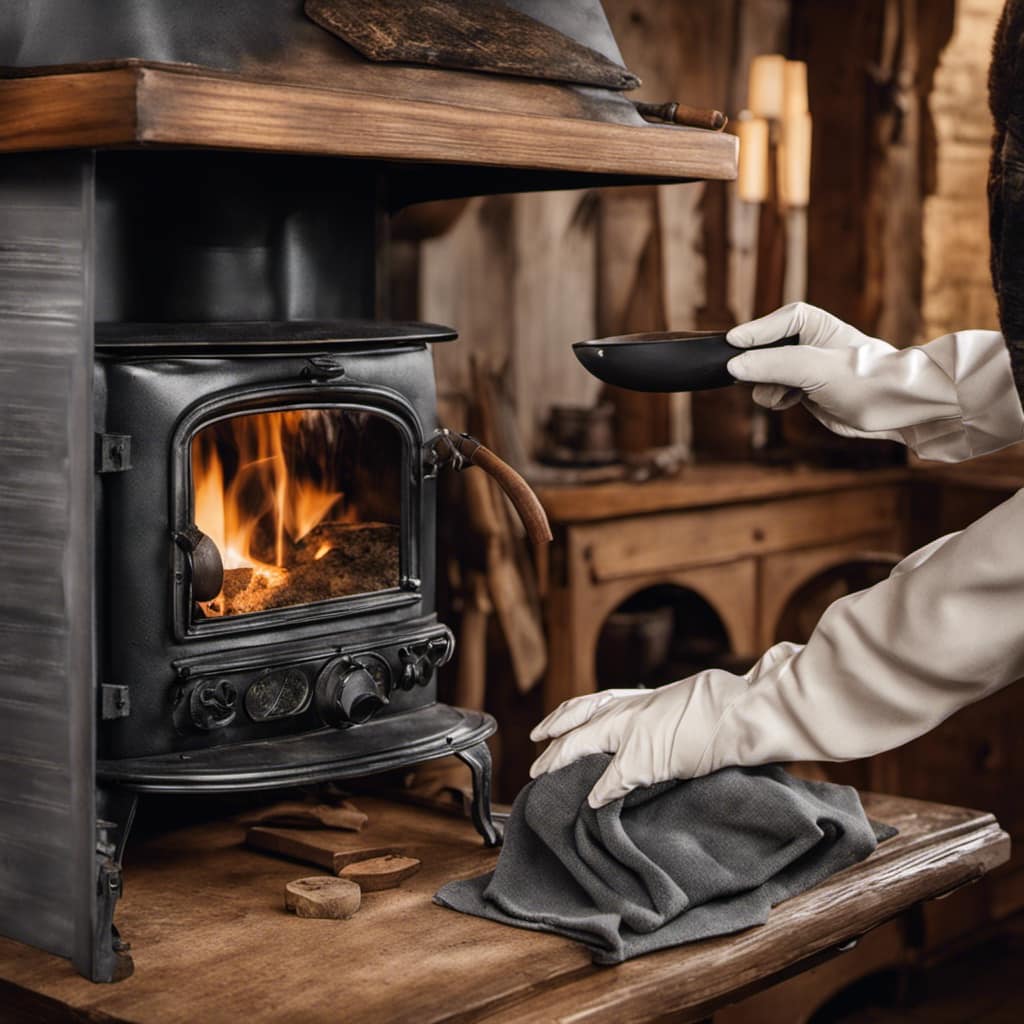
Are There Any Specific Safety Guidelines to Keep in Mind When Buying a Used Wood Stove?
When buying a used wood stove, it’s crucial to prioritize safety. Start by checking for any damage or defects. Verify that it meets current safety standards and has been properly maintained.
Can I Negotiate the Price of a Used Wood Stove Based on Its Condition and Age?
I can definitely negotiate the price of a used wood stove based on its condition and age. Factors like the brand, model, and any additional features will also affect its value.
Conclusion
After considering the factors that affect the value of a used wood stove, evaluating its condition, understanding the brand and model influence, and determining its age and history, it’s clear that pricing and negotiating the sale of a pre-owned wood stove requires careful consideration.
By taking into account these factors and conducting thorough research, sellers and buyers can ensure that they’re getting a fair price for a used wood stove.
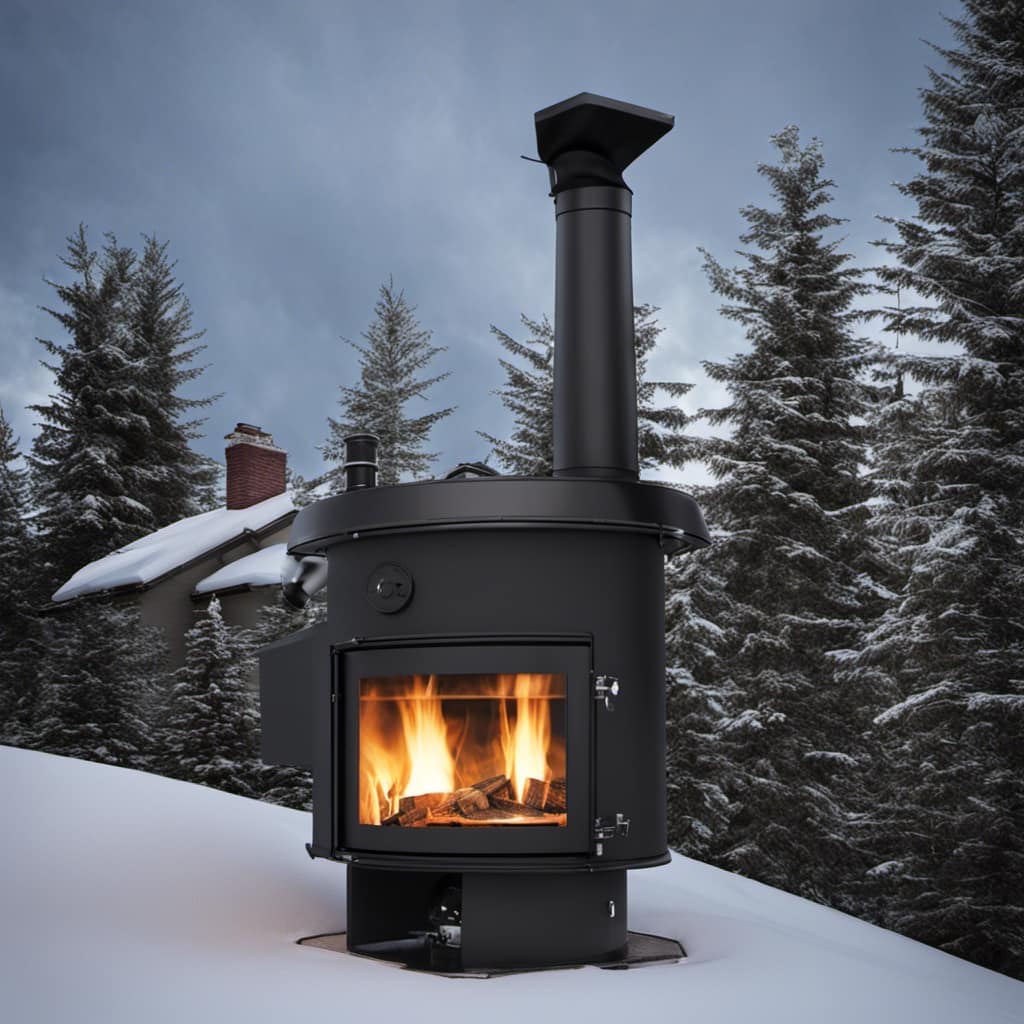
Growing up surrounded by the vast beauty of nature, Sierra was always drawn to the call of the wild. While others sought the comfort of the familiar, she ventured out, embracing the unpredictable and finding stories in the heartbeat of nature.
At the epicenter of every remarkable venture lies a dynamic team—a fusion of diverse talents, visions, and passions. The essence of Best Small Wood Stoves is crafted and refined by such a trio: Sierra, Logan, and Terra. Their collective expertise has transformed the platform into a leading authority on small wood stoves, radiating warmth and knowledge in equal measure.


